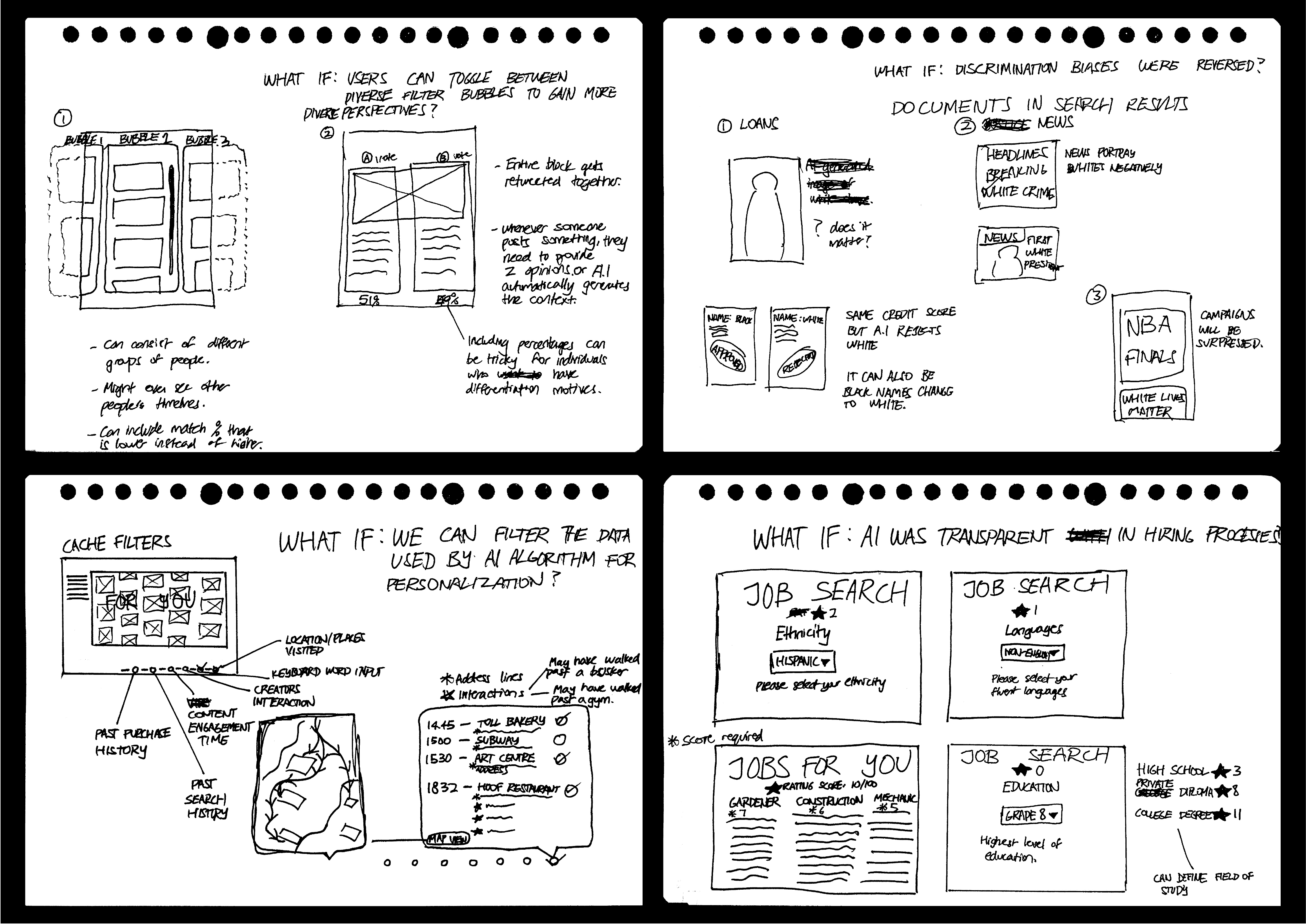▩▩▩▩▩▩▩ WEEK 4 ▩▩▩▩▩▩▩
Semester Timeline
My primary concern regarding the timeline revolves around the critical journal. Since the dissertation
draft is due in week 14, I’m not sure if my experiments and documentation needs to be completed by then.
I’m certain that my experiments would only be 75% done and my dissertation would be lacking a conclusion.
To address this, I planned my timeline with the second half of the year in mind, taking into account the
dissertation submission deadline. I've strategically planned to pause all experiments by week 12, allowing
me ample time to focus on preparing my dissertation draft. This approach ensures that I can submit a
research document that is at least 90% complete, despite the experiments not being fully finalised.

Timeline for semester 1
Mindmapping Exercise
During the mind mapping exercise, my primary objective was to establish the relationship between user
behaviour and speculative design within the context of algorithms. While I could independently connect
each of these elements to algorithms, merging them into a cohesive understanding proved challenging. To
address this, I initially compiled a list of keywords related to each component and then attempted to
identify their intersections.
However, I lost track of time during the class exercise, preventing me from completing the mind map.
Personally, I found that having the keyword list was crucial in this process. Without it, attempting to
draw the mind map would likely have resulted in a messy representation with overlapping lines, which
would’ve left me confused.
After drawing the mind map, I realised the connection between speculative design and user behaviour
comes in when I’m designing my experiments in the experimentation stage. This mind map not only
facilitated a clearer articulation of my thoughts but also highlighted gaps in my current understanding
of user behaviour.

Research Pillars Mindmap
Experimentation Fragment –
Experiments as Thought Experiments
While going through my readings, I realised that I might have misused the term ‘speculative prototyping’.
This became much more apparent when I was writing my RPO and my approach didn’t quite line up with the
research objective I have in mind. The primary goal of my research is to stimulate critical thinking, and
upon closer examination, I found
that the conventional process of speculative prototyping, which involves constructing designs and
prototypes as experiments, may not be the most direct path to achieve this objective. It's important to
note that speculative prototyping can certainly play a valuable role in my research, and its frameworks
will likely prove beneficial in developing my experiments. However, relying solely on speculative
prototyping as the central approach could introduce an additional layer of complexity to my research
process.
The main purpose of thought experiments is to spark critical thought through consequences of hypothetical
scenarios. This aligns more closely with my objective of stimulating critical thinking and engaging with
the ethical dilemmas of algorithmic content curation. Therefore, while I will continue to draw from the
principles of speculative design and prototyping, I may explore a more streamlined and targeted approach
to effectively address my research goals.
With my experimentation fragment now identified, the alignment between my chosen approach and research
objective is gradually becoming more coherent. To enhance this alignment further, I will dedicate some
time to delve deeper into the concept of 'Thought Experiments.' Currently, my understanding suggests that
it may represent a distinct topic in its own right, separate from the realm of speculative design. This
exploration will help me clarify how 'Thought Experiments' can contribute to my research, ensuring that
they complement and enhance my chosen approach rather than stand as a separate entity.
Sketching Starting Points
I've been delving into the initial stages of speculative design exploration, primarily by formulating a
series of "what if" scenarios. I find that these scenarios serve as valuable starting points for my
creative journey, allowing me to envision potential directions for my project.
Top left
What if: Users can toggle between filter bubbbles to gain more diverse perspectives?
Top right
What if: Discrimination biases were reversed?
Bottom left
What if: We can filter data used by AI algorithms for personalization?
Bottom right
What if: AI was transparent in the hiring process?
At present, my focus within the realm of speculative design is primarily concentrated in the UI/UX
field. This choice stems from the practicality it offers in terms of conducting user testing and
collecting relevant data. However, I've also been contemplating the idea of incorporating visual
elements to enhance the immersive experience for my audience. The visuals could play a pivotal role in
further immersing individuals in the speculative scenarios I aim to construct.
Throughout the development of these UI concepts, I've been consciously trying to maintain a balance by
trying not to veer too far from reality, as I want to evoke a sense of familiarity within the audience.
By grounding the speculative scenarios in elements that resemble our current world, I hope to emphasise
their tangibility, making them more relatable and thought-provoking for users. This approach enables me
to bridge the gap between the speculative and the real, fostering engagement and reflection among the
audience.

Initial starting point sketches